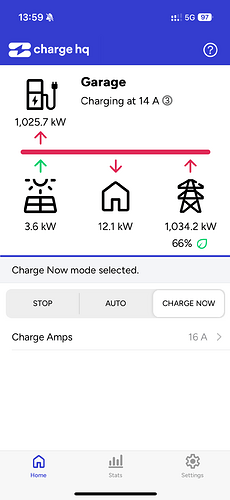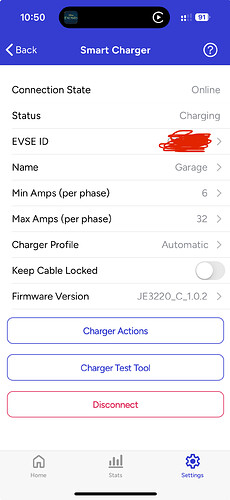Hi,
I had a Sevr X2 EVSE installed last week, which is advertised as being OCCP 1.6J compliant.
I know that it’s not officially supported, so I first connected it to the ChargeHQ test server and ran the tests and all seemed to work.
It’s working well insofar as control goes, but something is going awry between the EVSE and ChargeHQ in terms of reporting the active power.
My car supports up to 11 kW 3-phase charging and, after inversion losses, shows 9.8 or 9.9 kW flowing to the battery.
At the same time ChargeHQ thinks that the X2 is pushing about a megawatt to the car, with almost all of that drawn from the grid.
It’s no issue when I charge at full power (I have a schedule set for the 3 hours a day when I have free power from the grid), but it’s then not working when it’s meant to be tracking my solar, even when I have ample generation.
My PV generation and consumption data appears to be coming across correctly.
Has anyone come across this sort of issue before?
If this forum is monitored by ChargeHQ staff, is there anyone who can look at the OCPP logs to see where it’s going wrong?
Thanks.


